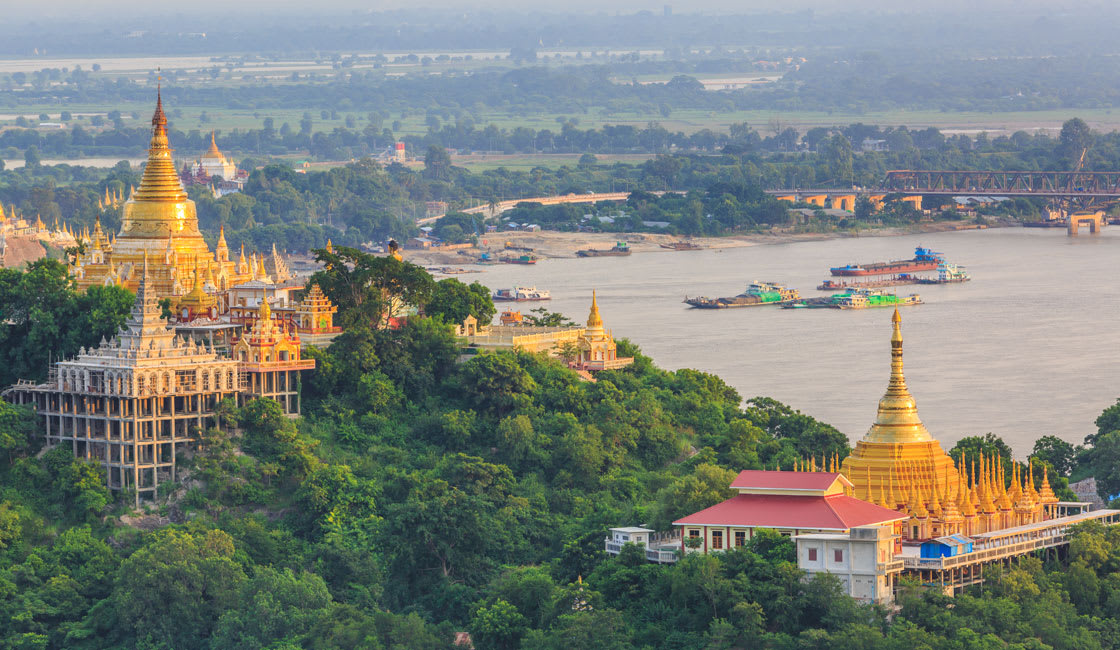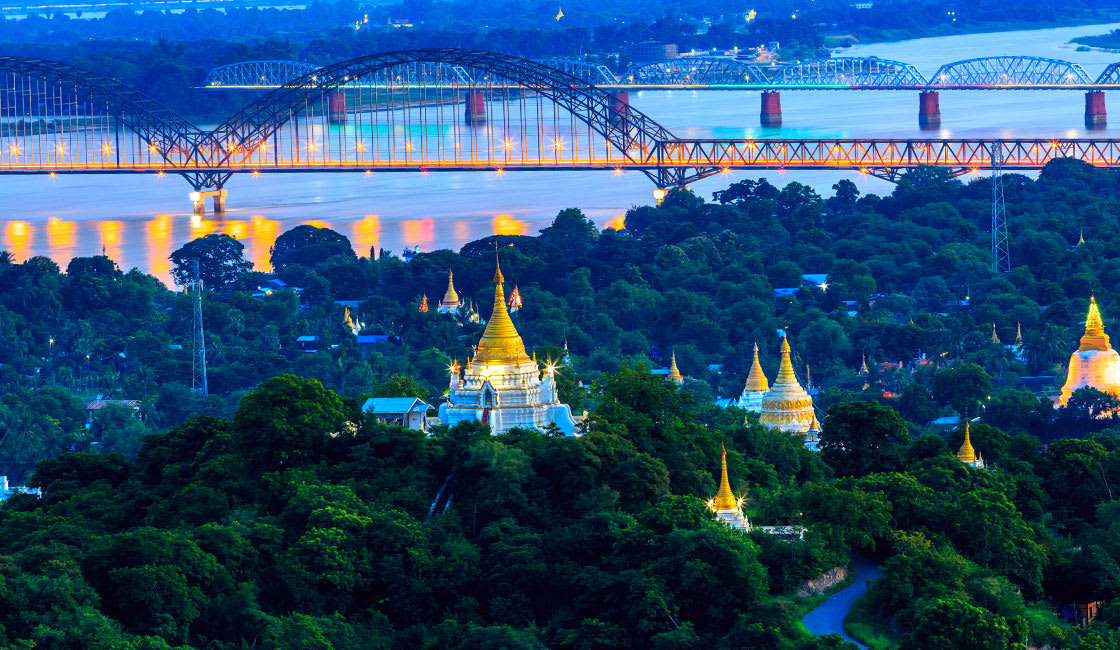
The Irrawaddy River is quite literally the backbone of Myanmar (Burma), running down the country’s spine from north to south. It emerges from the confluence of the Mali and N’Mai rivers in northern Myanmar, located in the snowy peaks of the Himalayas near the Tibetan border. The river then winds through temperate pine and oak forests north of Mandalay, before heading south through the humid lowlands and ‘dry zone’ of the Central Basin. Eventually, its course dovetails out across the swampy mangroves of the Irrawaddy Delta, curling into meandering channels, freshwater marshes and oxbow lakes, before emptying into the Andaman Sea.
Two-thirds of Myanmar’s population (nearly 40 million people) live in the Irrawaddy River Basin, and nearly every element of their lives play out on the banks of this ancient river’s course. It is the center of their agriculture, trade, and daily life. They use the waters for washing, drinking, farming, fishing, trading, traveling, and worshiping. Despite the country’s recent history of political tension, former military junta and ongoing inter-communal unrest, the Irrawaddy River remains a spiritual constant, filling and draining and refilling yearly with the coming and going of the monsoon rains.

Dawn over Irawaddy
So, how does this drastically changing climate affect travel on the river? Water levels can vary up to 45 feet in places, and ships have to be built accordingly with flat bottoms to avoid treacherous sandbanks which change constantly with the strong currents. Myanmar has a mostly tropical monsoon climate with three different seasons: hot, cool, and rainy.
The most popular season to visit the country is the cool season, between November and February. During this time, the conditions are clear and comfortable, with cooler nights. The water is at its lowest and banks are cracked and exposed. However, the hot season begins in March, and this could be an even better choice for your cruise if you can bear a rise in humidity and temperature. Travels will still be uninterrupted by rain and trips ashore to famous sites such as Bagan, Shwedagon Pagoda and Inle Lake will be much less crowded.
The rainy season kicks off in June and lasts until October, with the heaviest rainfall earlier on in the season, and more intermittent rains in September and October. While not widely considered the ideal time of year for travel on the river, it has a few secret perks. With the high rainfall, the banks teem with life and the surrounding forests and fields spring back into lush and verdant carpets. These elevated river levels allow cruises to travel further north into the stunning and less-populated Chindwin River (July – September) and Bhamo Rivers (August – September) which are naturally shallower and thus restricted for most of the year.
The swelling and receding of the Irrawaddy River remain a keystone of Burmese culture and livelihoods are held in the fluctuating balance of this mighty waterway and its tributaries. Recent floods in Rakhine State resulted in the displacement of over 9000 local people, while ongoing debates over the controversial construction of the Myitsone Dam project hold the livelihoods of many fishermen in suspense as well as representing huge environmental impacts for the region.
Since the release of current leader Aung San Suu Kyi in 2010, Myanmar has seen a shift from dictatorship to democracy. However, the future of the vibrant ecosystem of the Irrawaddy River is fraught with uncertainty, making travel to the area a priority for many while it still holds much of the untouched and untainted mystery of yesteryear.
While Rainforest Cruises aim to provide accurate and up-to-date information, we make no representations as to the accuracy or completeness of any information herein or found by following any link on this site. Rainforest Cruises cannot and will not accept responsibility for any omissions or inaccuracies, or for any consequences arising therefrom, including any losses, injuries, or damages resulting from the display or use of this information.




